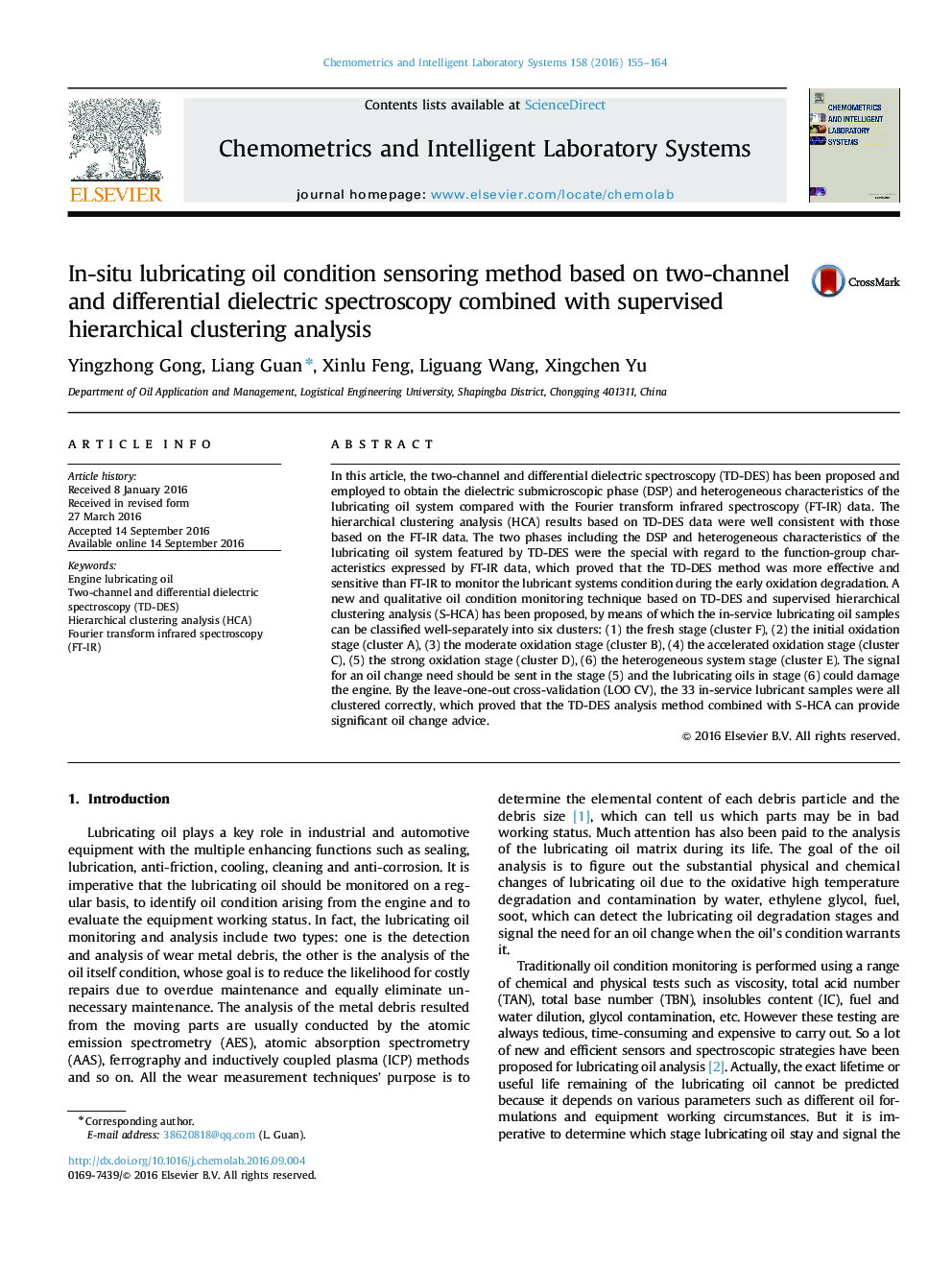| Article ID | Journal | Published Year | Pages | File Type |
|---|---|---|---|---|
| 7562606 | Chemometrics and Intelligent Laboratory Systems | 2016 | 10 Pages |
Abstract
In this article, the two-channel and differential dielectric spectroscopy (TD-DES) has been proposed and employed to obtain the dielectric submicroscopic phase (DSP) and heterogeneous characteristics of the lubricating oil system compared with the Fourier transform infrared spectroscopy (FT-IR) data. The hierarchical clustering analysis (HCA) results based on TD-DES data were well consistent with those based on the FT-IR data. The two phases including the DSP and heterogeneous characteristics of the lubricating oil system featured by TD-DES were the special with regard to the function-group characteristics expressed by FT-IR data, which proved that the TD-DES method was more effective and sensitive than FT-IR to monitor the lubricant systems condition during the early oxidation degradation. A new and qualitative oil condition monitoring technique based on TD-DES and supervised hierarchical clustering analysis (S-HCA) has been proposed, by means of which the in-service lubricating oil samples can be classified well-separately into six clusters: (1) the fresh stage (cluster F), (2) the initial oxidation stage (cluster A), (3) the moderate oxidation stage (cluster B), (4) the accelerated oxidation stage (cluster C), (5) the strong oxidation stage (cluster D), (6) the heterogeneous system stage (cluster E). The signal for an oil change need should be sent in the stage (5) and the lubricating oils in stage (6) could damage the engine. By the leave-one-out cross-validation (LOO CV), the 33 in-service lubricant samples were all clustered correctly, which proved that the TD-DES analysis method combined with S-HCA can provide significant oil change advice.
Related Topics
Physical Sciences and Engineering
Chemistry
Analytical Chemistry
Authors
Yingzhong Gong, Liang Guan, Xinlu Feng, Liguang Wang, Xingchen Yu,
